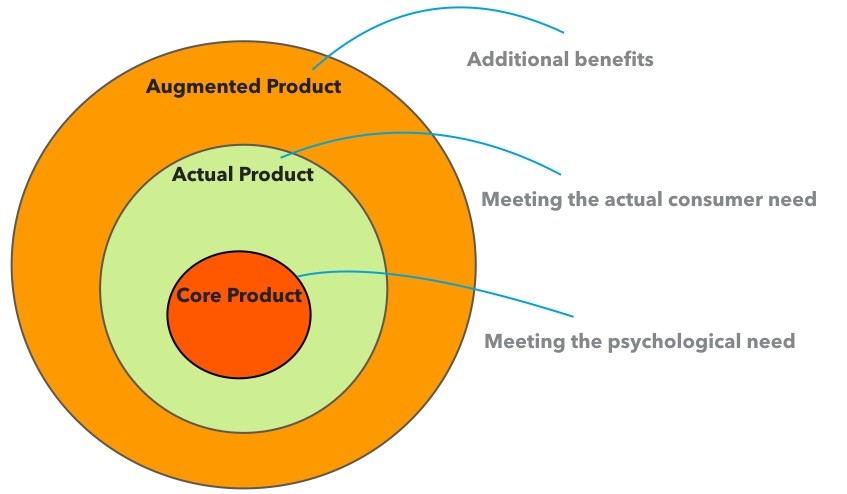
Product Strategy and Product Levels
How do you build sticky, memorable and great products? As a marketer (and an observer) that’s the basic question that I often think about. The answer to this question is hidden somewhere in psychology, principles and practices of Product Strategy, i.e. what to build, who to build for and how to build?
I was able to get some clarity on this during and after the recently concluded Section 4’s Product Sprint with Professor Adam Alter. One of the key things I learnt in this workshop was different levels a Product can have and how customers, consciously or unconsciously, view these different levels.
Let’s start at the beginning: What is a Product? As a business, this is the basic thing that you provide to your customers to buy from you. It can be physical things you build, services you provide, tangible things that a customer can hold or intangible things like ideas that live in your heart and mind. These are all products and need to be sold for a business to work and stay in business.
Now the main idea: All successful products can be broken into 3 distinct levels:
First the Actual product: When we think of a product it is the actual product that we are thinking about. For e.g. When we think of a Volvo we think of a car as an actual product. Something that has an engine and a body and takes us from point A to point B.
Then there is the Augmented Product: These are the things that come with the Actual Product and make it better… for e.g. services that come with the product, like extended warranty for a car, extra training session that enables you to unlock additional features/benefits. These additional benefits provide differentiation for a product in a crowded market and are key to stand out.
Volvo provides additional features that customers can buy to augment the actual (and core product) features, for e.g. an intelligent sensor system that will provide enhance safety for the cusotmers.
And finally the Core Product: This is the most important part of a successful product. This is where a product meets the psychological need of the customer. This is the reason why the prodcut is being sold and why people are buying it.
Every purchase that we humans make is driven by a psychological need and that’s what makes core product so important. Sometimes we are driven by fear (think security products), other times we are driven by status (think luxury/expensive products) and at other times we are driven by convenience (think delivery apps). All these are deep universal human emotions and drive our purchasing decisions everyday. We may not be thinking of them consciously but they are ever present when we are purchasing anything.
To me this is somewhat realted to the basic questions in Marketing, i.e. What is it for? and Who is it for? Thank you, Seth!!!
Most successful and well known firms in the world today provide products that meet core psychological needs for their consumers:
- Apple → Status /Belonging to a tribe
- Amazon → Convenience/Consumption
- Microsoft → Collaboration
- Google → Knowledge
- Facebook → Community/Connection/Being Liked
- Tesla → Association with (the high priest) Elon Musk and saving the environment?
Last but not least, Core Product is not only important externally to the firm but also internally. It should serve as the guiding light for every critical decision being made during product strategy and design phase. The business need to understand what core need they are trying to meet before making basic product decisions. A core product should drive the following internally:
- Decision on the Actual product
- Design and packaging of the product
- Naming and branding of the product
- Product lines to come after
- Product positioning in the crowded market
In summary, a product is not just one product but made up of 3 distinct products that need to be thought through from start to finish. Actual, Augmented and Core products are all key to a successful product, but its the Core Product that should drive the firm and its product strategy.
Next, how do you figure out what should be your (core) Product, i.e. how do you find your niche/target market and how you differentiate from the competition? Stay tuned.
Fawad Khan — San Francisco, May 2021

Software Quality, CISSP
9moWhile the point you drive is correct, the Venn diagram seems to be a wrong choice for your classification.